
Osteochondrosis of the cervical spine is known and has been fully studied. Currently, most of the working population suffers from this disease. This type of osteochondrosis not only develops in the adult population, but is also common in adolescents, the so-called juvenile osteochondrosis.
The cervical spine area is the most mobile part of the spine, so the burden on this area is very heavy. The disease develops gradually and is characterized by aggravation, which can lead to a significant decrease in the patient's quality of life.
Causes of diseases
Diseases usually have multiple causes, which may depend on the age of the patient. Let's highlight the most common:
- Any cause violates calcium and phosphorus metabolism;
- Various traumatic back injuries;
- Spinal load imbalance (physical inactivity, or conversely, the effect of increased load);
- Congenital spinal deformity;
- Posture changes, including scoliosis;
- Disease of the circulatory system, leading to malnutrition of the intervertebral disc;
- Age-related skeletal dystrophy.
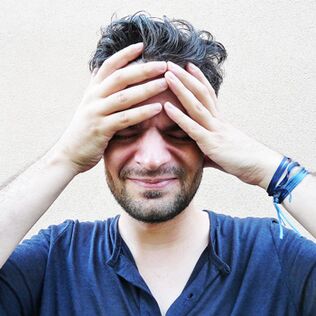
In puberty, the main reason for the development of the disease is injury and imbalance in physical activity (training process). In elderly patients, the main reason is the long-term habitual posture during work, which violates the hormonal background.
Other causes of disease development may be:
- Heredity;
- Hypothermia;
- Osteochondrosis worsens or is not adequately treated;
- Stressful situations and overwork.
Osteochondrosis gradually develops. People who regularly participate in sports may not realize that they are prone to this disease.
Most of this happens in people over 25 years of age. The characteristic of osteochondrosis of the cervical spine is that the process develops from the upper part. However, if you do not receive medical care, the process will gradually affect the lower part of the spine.
Symptoms of cervical osteochondrosis in adults and children
As the disease progresses, in many cases the process is asymptomatic. Sometimes it happens by chance that through X-ray images, you can determine the initial signs of the disease without positive complaints. It must be remembered that the older the patient, the more complaints he will make.
The main symptoms of cervical osteochondrosis are:
- Often headache and dizziness;
- Numbness in fingertips and weakness in arms;
- Nutritional performance;
- Increased blood pressure;
- Neck movement discomfort;
- Continuous pain or burning pain in the spine;
- Frequent neck muscle myositis;
- Posture change;
- Limitation of head movement;
- may also generate a mandatory head position;
- Tinnitus;
- Weather dependence;
- Tighten the neck when performing movements;
- Sleep disorders.

These are the most common symptoms that patients can experience. Unfortunately, this process can develop from adolescence, and teenagers can also make similar complaints.
Most of these symptoms occur simultaneously. The onset of cervical osteochondrosis was aggravated and relieved. This is due to the influence of stimuli on the body. We must not forget that if a similar diagnosis is made, rehabilitation and a course of treatment must be performed every six months to avoid the acute phase.
Considering that the main reason for the development of the disease is the reduction of intervertebral disc dystrophy and lack of appropriate treatment methods, the process may end in the formation of intervertebral hernia.
Complaints and clinical pictures of the disease-photos
When performing basic motor tasks (tilting or turning the head), the vascular manifestations in the form of dizziness or headaches can worsen. In all complaints, the patient tried to take an additional forced posture to relieve symptoms, which would worsen the nutrition of the intervertebral disc.
These complaints usually prompt patients to see a doctor. Without treatment, these complaints will worsen and last longer, that is, they will not go away on their own.
The pain of cervical osteochondrosis is usually persistent, painful, and burning. The disease can be accompanied by periodic "lower back pain" caused by sudden movements.
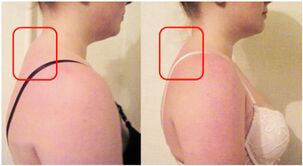
Elevated blood pressure in the context of osteochondrosis suggests that the patient needs a therapist's examination. If proper treatment is not performed in time, the increase in blood pressure will disappear permanently, leading to secondary hypertension. In these situations, the correct collection of memories is very important.
When the process is limited to the cervical spine, the discomfort will spread along the back of the neck, and the continuous tension of the musculoskeletal system will restrict movement and create a forced head position.
Cervical osteochondrosis pain accompanied by decreased sensitivity. Due to the continuous discomfort, muscle rollers are gradually formed in the shoulder area, making the patient feel uncomfortable when palpating the area.
In addition to the constant discomfort, the patient also suffers severe shooting pain in the neck. The occurrence of this complaint indicates that patients must be given adequate rest to relieve pain. In some cases, the pain is so severe that one cannot perform the simplest movements (turning the head, breathing deeply, straightening the waist). In all cases, the patient should be examined by a doctor and the diagnosis of osteochondrosis should be made.
Changes in hormone levels also play an important role in the development of cervical disease. Therefore, carefully selected physical exercise will reduce the general clinical symptoms and relieve the patient's condition. Because neck pain is often troublesome, secondary sleep disorders can occur. It is difficult for a person to sit comfortably in bed and worry that this will cause psychological stress.
In addition, patients should pay attention to the violation of sensitivity. They are described as "chicken skin b" on the fingertips. In some cases, discomfort may spread throughout the arm and muscle strength will decrease.
Disease diagnosis
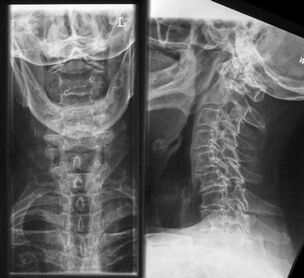
It is difficult to make a diagnosis based on an examination. Basically, in order to confirm the diagnosis, the following activities will be carried out:
- Collect complaints thoroughly;
- Consultation of specialists (cardiologists, endocrinologists, neurologists);
- Cervical X-ray examination;
- Magnetic resonance imaging.
Examination by a professional doctor must be excluded to rule out heart conditions and other acute diseases. Excluding acute somatic pathology can be said to be the diagnosis of osteochondrosis. In addition to general clinical manifestations, X-ray examination of the spine can also be used to confirm the diagnosis.
X-rays are the most affordable and easy-to-use test to help diagnose. The picture shows a narrowing of the space between the vertebrae, which indicates dystrophy of the intervertebral disc. The growth of bones can be distinguished along the edges of the vertebrae. If osteochondrosis is complicated by the instability of the cervical spine, the displacement of the vertebrae relative to each other can be seen under X-rays.
Cervical osteochondrosis is a disease that can show the most severely damaged area by radiography. Even if you examine a segment of the cervix, you can see that the process is not evenly distributed.
In particularly difficult situations, magnetic resonance imaging will be performed, which helps diagnose osteochondrosis-complication of intervertebral hernia. With the help of layer-by-layer MRI images, even the smallest hernia changes can be determined and the extent of the disease can be immediately displayed.
Treatment of cervical osteochondrosis
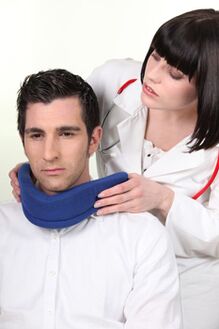
Only doctors know how to treat cervical osteochondrosis in the acute and onset phases. The treatments prescribed for this situation should be comprehensive. As the disease worsens, it includes:
- drugs;
- Comprehensive rehabilitation therapy (physical therapy, gymnastics, massage, acupuncture, manual therapy);
- Physical therapy (electrophoresis, UHF, magnetic therapy, laser therapy);
To prevent the deterioration of osteochondrosis, please resort to:
- Spa treatment;
- Traditional Medicine;
- Wear a special bandage and corset;
- Lifestyle changes (weight loss, balanced physical activity).
The drugs used to treat cervical osteochondrosis are as follows:
- Anti-inflammatory drugs;
- Drugs that improve blood circulation;
- Vitamin complex;
- In acute situations, painkillers;
- means to reduce muscle tension.
In addition to pills and injections, creams, ointments and gels are actively used to apply them to the affected area. Through their action, they help skin irritation in a certain area, thereby improving blood circulation in small blood vessels, thereby ensuring the delivery of nutrients to the damaged area and reducing muscle tension.

After the acute phase, plan physical therapy, massage and physical therapy exercises. Rehabilitation treatment is an auxiliary means of mainstream medical treatment. With the improvement of the condition, the nutrition and nutrition of the intervertebral disc will be better passed.
During the treatment process, patients will find that their health condition has improved, efficiency and mood improved. If the treatment is stopped but not completed, the deterioration of osteochondrosis will be common.
The rehabilitation therapist will tell you how to treat cervical osteochondrosis during the recovery period.Before discussing the complexity of rehabilitation treatment, it should be noted that any treatment should be accompanied by corrective mattresses. These include orthopedic mattresses and pillows.
Experts also recommend wearing Shants collars permanently or for a period of time. This method is particularly widely used in children's practice when the patient wears the method during homework. Shants collars are individually selected in the orthopedic salon.
Choose an orthopedic pillow to treat osteochondrosis for each patient. It should be suitable for the size of the bed and should be selected according to the patient's physique. It should not be too small or too big, the main guiding principle is the width of the human shoulder.
Pillows that extend sleep and rest periods should have a medium firmness and a shape similar to a square or rectangle. Other shapes are also suitable for short breaks. According to the mobility of the degeneration process, the orthopedic pillow for osteochondrosis should be replaced.
Exercise and gymnastics (lfk)

Rehabilitation treatment should include gymnastics. The main task of the exercise is to strengthen the muscles of the neck and back, upper shoulder straps, improve the mobility of the spine, and eliminate muscle fixation. In addition, the exercise of cervical spine chondropathy will affect the deep muscles.
As a result of gymnastics exercise for cervical osteochondrosis, the physiological curve gradually recovered, and the load of the intervertebral disc was reduced. We must not forget that the exercise of cervical chondrosis should also include the thoracic segment.
Gymnastics for neck osteochondrosis is performed by the coach. It can help patients understand where more emphasis is needed. The load and number of tasks are individually selected and depend on:
- From the age of the patient;
- About the universality of the process;
- from other complications;
- About the effectiveness of medication.
First of all, they perform simple but not difficult tasks, because the body begins to adapt to the new conditions, and the muscles work with sufficient volume, so exercise becomes more difficult and exercise time increases.
Exercise therapy for cervical osteochondrosis involves simple movements. These movements tilt the head back and forth, gradually increasing the circular movement of the head. It should be remembered that even with physical therapy, there may be contraindications. Usually, the complex content of a class includes tasks designed to develop and influence all parts of the spine.
After the cervical spine exercises, gradually increase the tasks to improve the work of the thoracic and lumbar spine. Physical therapy for cervical osteochondrosis can be performed in a standing or sitting position. The task is performed gradually at a slow rate, which will allow for other breathing exercises.
Physical therapy contraindications:
- Acute pain syndrome;
- Increased blood pressure and cardiology in the acute phase;
- Coordination disorders and diseases of vestibular equipment;
- Temperature rise;
- The deterioration of other chronic diseases; The state after surgery.
Special technical exercises
This technology is based on the phased recovery of normal activities of the musculoskeletal system. Gymnastics exercises carried out on a dedicated simulator will allow you to gradually resume the work of the cervical spine structure.
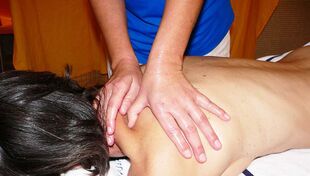
Massage cervical osteochondrosis
In addition to general strengthening exercises, massage also has good results. Massage for neck osteochondrosis can be used in many ways (classic, segmented, acupuncture points). In some cases, it is allowed to combine different technologies in one session.
We must not forget that the massage for cervical osteochondrosis should be carried out on a hard surface, facing down, and its duration can be more than 10 times in a row. The frequency of course repetition is also determined by the attending doctor. If the patient sleeps on the correct pillow, the effect of the massage will last longer.
Physical therapy methods such as magnetic therapy or electrophoresis have local stimulating effects. Magnetic therapy is a painless operation that can be well tolerated by adults and children. The operation lasts for a few minutes and the patient must remain still, so it is most recommended for elderly patients.
Electrophoresis is an operation that uses special equipment. During the operation, the patient will feel a slight tingling sensation caused by the electric current. The frequency and impulsivity of the signals are different for each age group. This technique is used to inject drugs with positive effects. Compared with magnetic therapy, this operation is more aggressive, so its implementation must be strictly instructed.
This technique is used to inject drugs with positive effects. Compared with magnetic therapy, this operation is more aggressive, so its implementation must be strictly instructed.
A balanced diet is essential for this disease. It is recommended that patients eat more fruits, vegetables, meat, herbs, and fish. You should limit edible salt and various spices, seasonings, smoked or fried foods, and sugar. It is best to drink herbal soup and tea, and it is recommended to avoid drinking coffee and alcohol.
Traditional medicine is used to relieve pain. The most common is to apply compresses and mixtures to the affected area. The success of the treatment of cervical osteochondrosis largely depends on the patient's consciousness. After you feel better, you should not withdraw from introductory courses and treatments. Frequent use of painkillers that can temporarily relieve pain is unreasonable, and the disease itself cannot be treated.




























